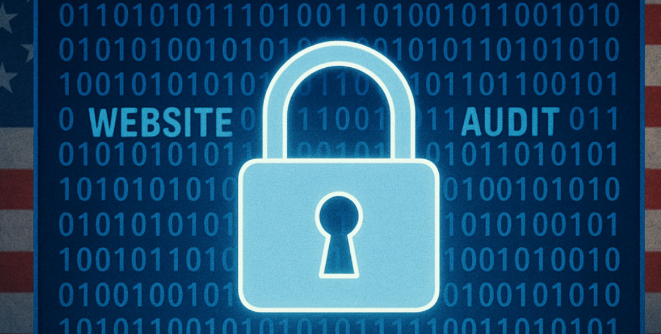As cyber threats become increasingly sophisticated, regularly auditing your website for security flaws has never been more important. Whether you run a personal blog, an eCommerce store, or a corporate site, performing a security audit helps uncover vulnerabilities before attackers do.
In this comprehensive guide, we’ll walk you through how to perform a security audit on your website, from identifying weak points to implementing fixes. This step-by-step approach is suitable for beginners and professionals alike and can significantly improve your overall cybersecurity posture.
What Is a Website Security Audit?
A website security audit is a systematic evaluation of your site’s infrastructure, code, plugins, hosting environment, and user access controls to identify vulnerabilities, misconfigurations, or outdated components that could be exploited by attackers.
This cybersecurity audit helps:
-Identify potential entry points for hackers
-Detect outdated software and insecure settings
-Ensure data protection policies are in place
-Comply with security standards like GDPR or PCI DSS
If you want to protect your website and customer data, an audit is not optional—it’s essential.
Why You Should Perform a Security Audit
Here are the top reasons to run a website security audit:
Prevent Data Breaches: Catch weaknesses before cybercriminals do.
Avoid Downtime: Proactive fixes can prevent expensive outages.
Boost SEO: Search engines penalize compromised or blacklisted sites.
Maintain Customer Trust: Show users that their data is safe.
Meet Compliance Standards: Especially important for eCommerce or medical websites.
Now, let’s get into how you can perform a website security audit effectively.
Step 1: Create a Website Security Checklist
Before diving in, it’s helpful to prepare a website security checklist that includes key areas such as:
-Software updates
-User access levels
-Malware scanning
-HTTPS implementation
-Password policies
-Firewall configuration
-Backup frequency
-Third-party plugin reviews
Having a checklist will ensure you don’t overlook important areas during the site security audit.
Step 2: Check for Software Updates
Outdated software is a common vector for cyberattacks. Start your audit by reviewing:
Content Management System (CMS): Is your CMS (e.g., WordPress, Joomla, Drupal) updated to the latest version?
Plugins and Themes: Are all plugins and themes current?
Custom Code: Are there any legacy scripts that need revision?
Always remove any unused or abandoned plugins, which can pose hidden risks.
Step 3: Review User Access and Permissions
Mismanaged user permissions can open the door to unauthorized access.
-Audit all user accounts and delete any that are inactive or no longer needed.
-Enforce role-based access control—only give admin rights to users who absolutely need them.
-Enable two-factor authentication (2FA) for administrators and key users.
This step helps prevent internal breaches or account takeovers.
Step 4: Perform Malware and Vulnerability Scans
Use automated tools to scan your site for malware, suspicious code, and vulnerabilities. Popular tools include:
-Sucuri SiteCheck
-Wordfence (for WordPress)
-Netsparker
-Qualys SSL Labs
-Detectify
These scanners will highlight issues like:
-SQL injection points
-XSS vulnerabilities
-Known malware signatures
-Security headers misconfigurations
Schedule scans to run weekly or monthly depending on your site’s size and complexity.
Step 5: Verify HTTPS and SSL Configuration
Ensuring your site uses HTTPS is not only important for security but also a ranking factor for SEO.
-Confirm that a valid SSL certificate is installed.
-Use SSL Labs by Qualys to test your HTTPS configuration.
-Force HTTPS site-wide via your CMS or .htaccess file.
If your site still runs on HTTP, it’s time to upgrade immediately.
Step 6: Inspect Your Web Hosting Environment
Your hosting environment is a foundational part of your website security.
-Make sure your host offers firewall protection, DDoS mitigation, and malware monitoring.
-Check whether your server software (PHP, MySQL, Apache, etc.) is up to date.
-Ensure that file permissions are correctly set (e.g., 644 for files, 755 for directories).
-Confirm regular backups are performed automatically and stored off-site.
For better security, consider moving to a managed hosting provider with proactive security measures.
Step 7: Audit Third-Party Integrations and APIs
Every third-party service you connect with—payment gateways, marketing tools, CRMs—can be an attack vector.
-Review API keys and make sure they’re stored securely.
-Disable unused integrations.
-Check the security policies of third-party tools to ensure they align with your standards.
Always use trusted vendors with a good track record of protecting data.
Step 8: Review Your Website’s Security Headers
Security headers help protect your site from common attacks such as clickjacking, MIME-type sniffing, and XSS.
Use a tool like SecurityHeaders.com to test your site, and implement headers like:
-Content-Security-Policy (CSP)
-Strict-Transport-Security (HSTS)
-X-Content-Type-Options
-X-Frame-Options
These simple changes can drastically improve your site’s defenses.
Step 9: Test Backup and Recovery Procedures
A backup is only useful if it works. During your audit:
-Verify that backups are being created regularly.
-Ensure they include your site files and databases.
-Test restoring a backup on a staging server to confirm it functions properly.
Use tools like UpdraftPlus, BlogVault, or Jetpack Backup to automate this process.
Step 10: Document and Fix All Issues
After performing the audit:
1. Document all identified vulnerabilities.
2. Prioritize them by severity (Critical, High, Medium, Low).
3. Assign fixes to appropriate team members or handle them yourself.
4. Re-test after applying each fix.
Maintaining an audit log can help you track your progress and comply with cybersecurity best practices.
Final Thoughts
Performing a website security audit is not just a one-time task—it’s an ongoing commitment to protecting your online presence. In 2025, the digital landscape is more interconnected than ever, and hackers are constantly evolving their tactics.
To secure your website, follow these steps regularly:
-Scan for malware
-Keep software updated
-Limit user access
-Secure APIs and third-party tools
-Back up everything
-Harden your server
By making audits a part of your routine website maintenance, you’ll dramatically reduce the risk of being hacked and build greater trust with your users.

